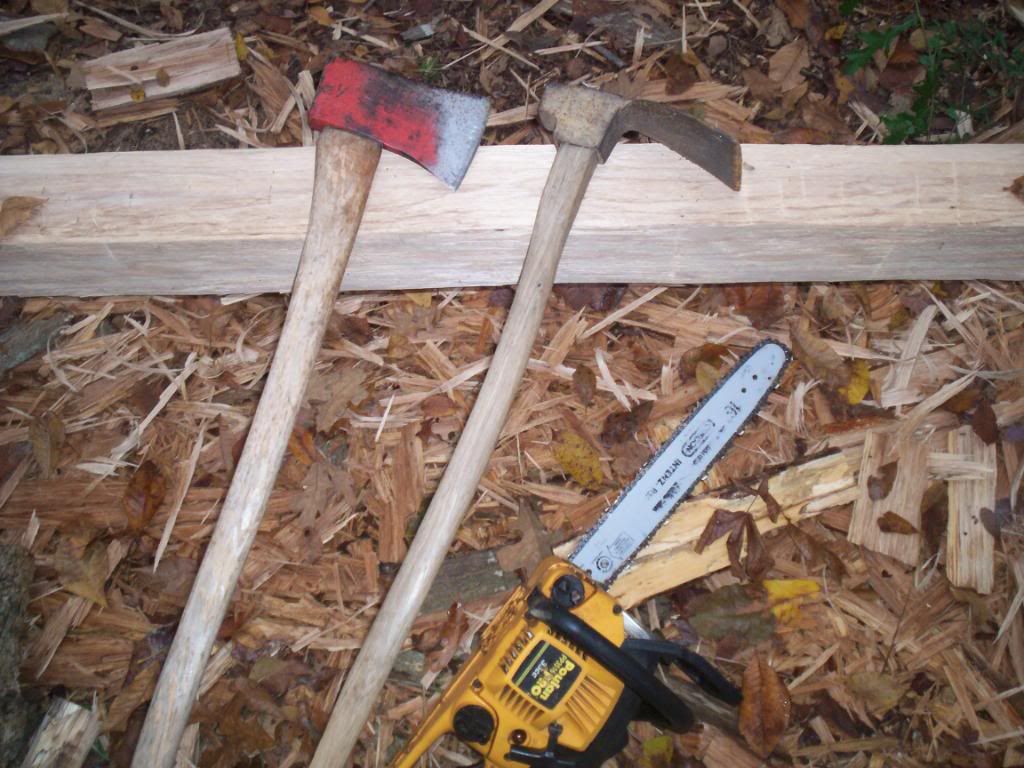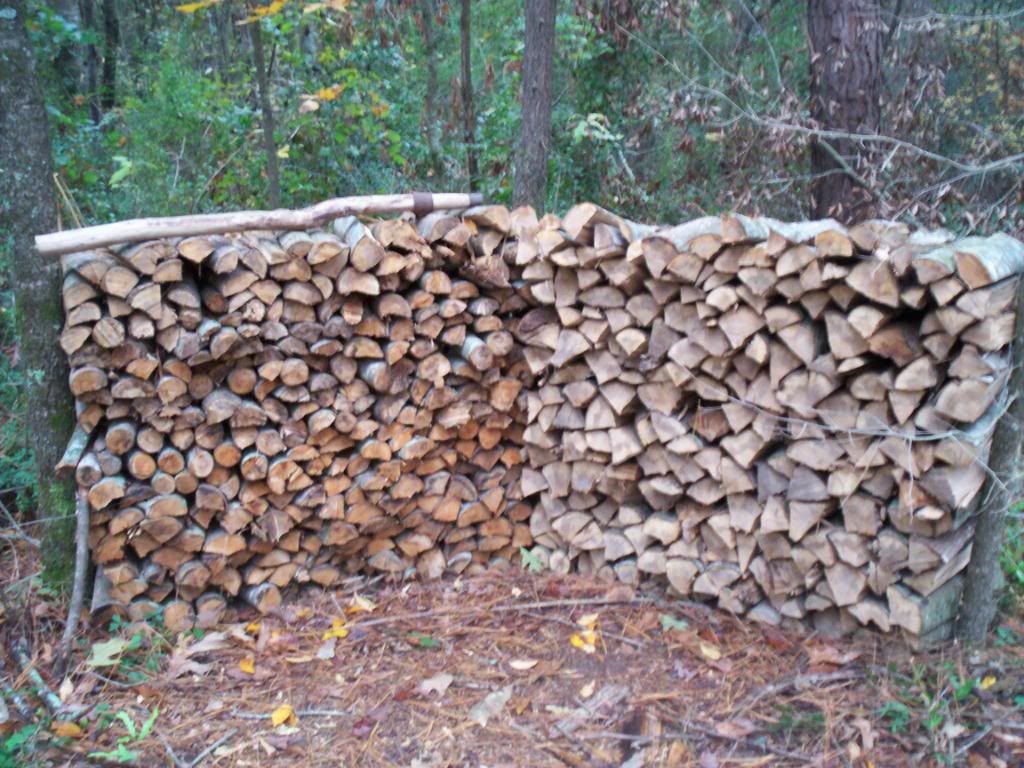My name's Chris. I live in south Mississipi, and I'm tired.
Tired of sitting still, tired of feeling my blood congeal in my veins while I stare at a computer screen for 9 hours each day, and tired of this fast-paced, selfish life we lead. It's time to turn back the clock and rediscover the honest pleasure of a hard day's work and, in the process, craft a strong, beautiful home for me and my family.
Our story starts with a gift. My wife and I were in our early twenties, and we lived with her great-grandfather. He was a 90 year-old dementia patient who needed constant supervision, so we cooked, cleaned, and tried to keep him functioning and happy for as long as possible. The old gent eventually got to a point where we couldn't care for him anymore; his daughter, Sue, (my wife's grandmother) contacted a nursing home near Lafayette, Louisiana and had him placed under their care. To stay close to him, she moved to Lafayette as well.
Here's where the miracle happens. Before she moved, Sue lived in a single-wide trailer on a wooded 5-acre plot several miles outside the city. Most of the neighbors have pastureland and livestock, and some devote their land to pine plantations. With its tall trees and abundant wildlife, it's a beautiful place.
In an act of true generosity, she handed the place to my wife and me, no strings attached, along with a pickup truck and a shed full of tools that had belonged to her husband. To say we were flabbergasted is an understatement! Feeling slightly overwhelmed by it all, we started the process of moving into our first home. Until this point, I'd been unable to find a job that paid well enough to buy a home, so I'd very nearly given up on finding a place of our own.
But now--praise the Lord--we had land, a home, two vehicles, a new baby, and a new job. I wandered out to the old shed and started rummaging around, only to wind up knee deep in pure gold! Well, it was gold to me. I found two axes, an adz, a working chainsaw, and more hand tools than I could count.
I hefted one of the axes and glanced over my shoulder, catching sight of a tall water oak in our front yard. My inner five year-old rose to the surface and, with a speculative gleam in bloodshot, computer-tired eyes, I approached the tree.
I'd grown up in south Mississippi with a wood-wise grandfather who, as he puts it, "isn't quite civilized", so felling a tree was no great mystery. I'd seen it done a hundred times and performed the feat myself a few times after hurricane Katrina damaged half the trees in our yard and tossed an exceptionally large oak across the roof. But I'd never done it with an axe.
The first stroke bit deep into green wood, and the second carved out a small notch. I started to get a feel for the old axe, and applied every fiber of muscle in my body to bringing down that water oak. Finally, after I'd cut a deep wedge and felling notch, I heard the first ominous crackle. Time stood still as the big log swayed in the gentle breeze, and all I could do was look up and watch in awe as the tree groaned, voiced a splintering, cracking protest, and arced to the ground. It slammed into the dirt with a pulverizing "boom," and I let loose a war-whoop, raising my axe and capering down the length of the fallen trunk like a backwoods madman.
A trip to the farm supply store netted a splitting maul and a pair of wedges, and the tree quickly transformed into a neatly-stacked pile of firewood. I was hooked. Every chance I got, I'd drag another oak from the woods and cut, split, and stack it. The big "whump" of a log slamming into the ground, the whine of a chainsaw as I cut it into 16-inch lengths, and the solid whack of the splitting maul were music to my ears.
The wife and I had discussed needing to push the treeline back from our trailer in case another Katrina came along, so I was checking an item off the honey-do list and enjoying myself at the same time. And as the wood dried, my then 4 year-old son Dominic would cajole me into using the fire-pit on our deck for roasting marshmallows. Everybody wins!
I searched the "local" bookstore (which is a 30-minute drive from home) and found a book by Frank and Stephen Philbrick called "The Backyard Lumberjack". It provided a wealth of information, and I was slightly relieved to find out I'm not the only crazy man who loves swinging an axe. But then I saw something else...a book on building log cabins. That inner 5 year-old who loved his Lincoln Logs pointed at it, and I bought the book.
It re-awakened every pioneer dream I'd had as a kid, every half-remembered urge to carve a life for myself out of the woods and build with my own two hands. Well, that's being slightly dramatic, but you get the picture! Every American boy grows up wanting a log cabin. It's in our DNA. So I scoured the internet and read every shred of information I could find about log structures, everything from the websites of massive log-building schools to the old-time Appalachian wisdom of men like Charles McRaven.
And I started looking around the property. The first thing I noticed was a tall, straight tree that I couldn't identify. The bark looked vaguely like a hickory, but the leaves were vastly different. These trees were everywhere, and they often reached 30-40 feet before the first limbs forked out. After consulting a book about trees, I realized they were tulip poplars, sometimes called "Yellow Poplar" by the old-timers around here (or "yaller poplar", if you want it in the vernacular). I'd never seen them outside of ornamental gardens and well-tended yards, so this was a shocker for me. I'd also just finished reading about pioneers in this area using poplar logs for their cabins. The gears in my brain started clicking, and I went back to my research.
In the moist, humid climate of south Mississippi, round-log cabins don't seem to last long without careful maintenance and chemical preservatives. I wanted something I could trust to last long after I'm gone, so I began looking at ways to combat the ever-present rot problem. My eyes fell on a page titled "Hewn-Log Homes", and I was off to the races.
Hewing logs removes the sapwood, which is known for attracting insects, fungi, and other nasties, leaving you with a square, flat-sided log of pure heartwood which, if kept dry, will last much longer than the builder. Then it was back to the internet and Google, performing searches on every variation of the word "hew" that I could imagine. In every tutorial I found, the proper tool for the job was a wide-bladed axe called a broad-axe. In my next post, I'll describe my first attempt at hewing a log and include pictures for those people (like me) who need to see the process to really grasp it.
I warn you--it isn't pretty! Neither was the second attempt, or the third. Stay tuned!



No comments:
Post a Comment